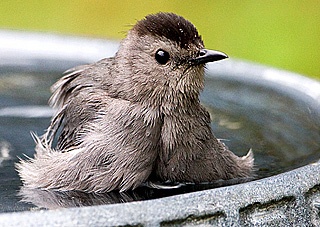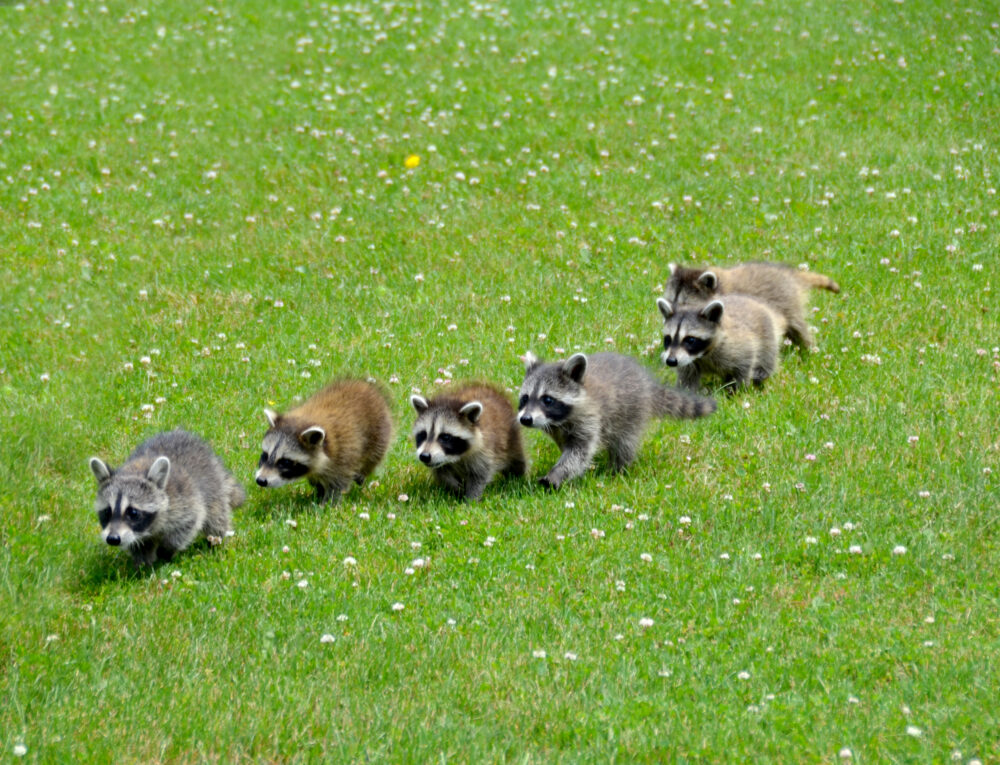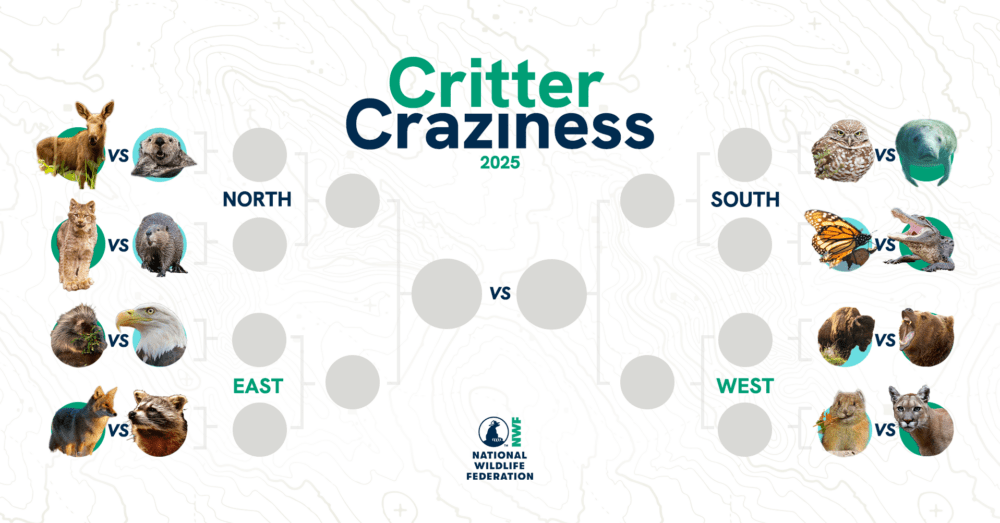We have much more to do and your continued support is needed now more than ever.
Bird of the Week: Gray Catbird

Of all the wonderful birds that visit my Washington, DC, Certified Wildlife Habitat® site each summer, my very favorite species is the gray catbird. Mostly slate gray—with a small black cap, darker gray tail and rusty patch just under the tail—the catbird is hardly the most spectacular bird on the block. So, why am I so drawn to it? I can think of five reasons:
1. Gray catbirds go away for the winter and come back in spring. Though the birds breed throughout most of the United States east of the Rockies, the majority spend the winter in the Tropics of Mexico and Central America (the exception being birds right along the Atlantic Coast). Each spring, I eagerly await the return of catbirds to my yard—and like to think that the same individuals are coming back every year. Some scientists believe the birds are indeed faithful to summer nesting sites.
2. You can find catbirds along with less common birds in relatively pristine habitats. Sure, catbirds seem happy enough breeding in my urban backyard, but on a recent trip to Virginia’s Shenandoah National Park, I also spotted them sharing breeding habitat with colorful wood warblers (American redstarts as well as Blackburnian and chestnut-sided warblers) at 3,500 feet above sea level in the Blue Ridge Mountains.
3. I enjoy observing the behavior of catbirds. Skulking about in dense tangles of vegetation, the birds initially appear to be extremely skittish, yet they don’t fly off when you approach them. Admitting to shameless anthropomorphism here, I often feel like “my” catbirds are observing and even even trying to communicate with me as they energetically hop from branch to branch around me.
4. Catbirds really do sound like cats. “If you’re convinced you’ll never be able to learn bird calls, start with the gray catbird,” advises the Cornell Lab of Ornithology. “Once you’ve heard its catty mew, you won’t forget it.”
5. When catbirds are singing—not just mewing—their songs are complex and lovely. Closely related to mockingbirds, gray catbirds are highly skilled songsters, often copying and stringing together the tunes of other species. Their intricate songs can last for up to 10 minutes at a time. Catbirds may start singing before dawn and continue until after after the sun goes down.
Adaptable Songbirds
“Unlike almost all Neotropical migratory songbirds, the catbird has adapted well to the widespread urban and suburban habitats created by people,” notes Gregory Gough of the Smithsonian Institution’s National Zoological Park. One adaptation is that catbirds will attempt two or more nests in a season if a predator eats their eggs or young; many songbird species wait until the following year to try again if they lose a nest.
Still, according to the Cornell lab, catbirds have declined in recent years in the southeastern United States. In addition, the lab notes that catbirds “tend to winter near the coast, making development of coastal habitat a possible concern for the future.”
Catbirds and Cats
A recent study on the effects of urbanization on wildlife tracked the early lives of gray catbirds in three suburbs of Washington, DC. Conducted by Peter Marra and Thomas Ryder of the Smithsonian Institution and Anne L. Balogh of Towson University, the study involved affixing very small radio transmitters to 69 newly hatched gray catbird chicks. The transmitters recorded the birds’ locations every other day until the animals left the study area or died.
Of the 42 young catbirds that died, nearly 80 percent were killed by predators, and domestic cats were responsible for nearly half the known predation.
The study “adds more validation to what we’ve been saying for years: that outdoor cats are a highly destructive predatory force that is causing havoc in the world of native wildlife,” says Darin Schroeder, vice president for conservation advocacy at the American Bird Conservancy.
Backyard Tips
According to the national zoo’s Gough, “catbirds are one of the few Neotropical migratory songbirds that will use bird feeders.” They do not eat seeds, he says, but relish halved oranges, raisins, fruit-flavored suet and peanut butter. “They are also quite fond of bird baths, and whole families will communally bathe.”
You can also attract and nurture catbirds by planting native fruit-bearing shrubs and trees, including dogwood, holly and serviceberry.
Make your yard more inviting to catbirds and other wildlife by turning it into a Certified Wildlife Habitat® site.
Voice: Song is a meandering series of sweet phrases, squeals and nasal mewing notes (mewing call gives species its name); also gives a low wurt and an abrupt, rattling kkkk alarm call, sounding like a mechanical noisemaker.
Sources: Cornell Lab of Ornithology’s All About Birds, Smithsonian Institution’s National Zoological Park and National Wildlife Federation Field Guide to Birds of North America.
Enter Our Photo Contest!
Robert Strickland took the above photo of a gray catbird in his yard and entered it in our magazine’s photo contest. Why not enter your own best shots this year in the National Wildlife Photo Contest? Winners in seven categories (including birds) will appear in National Wildlife alongside images taken by some of the world’s top nature photographers.






















